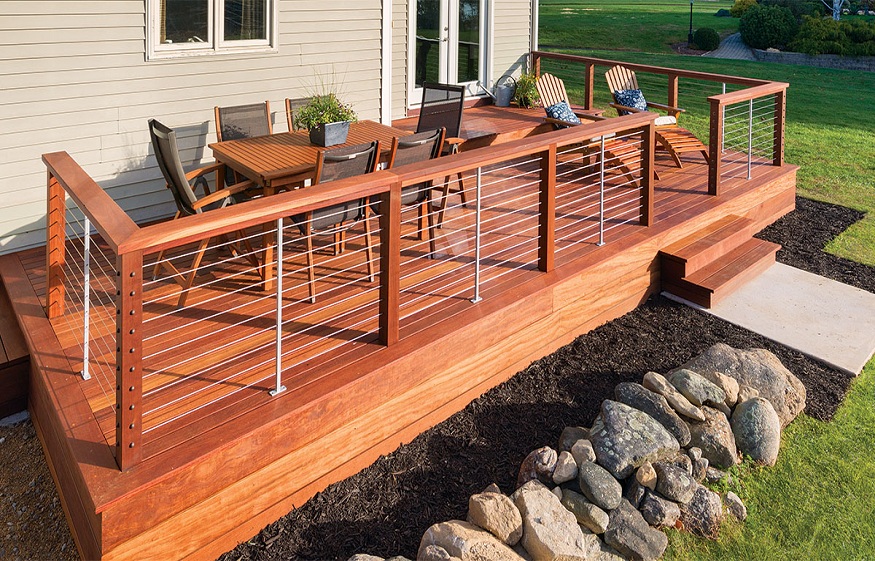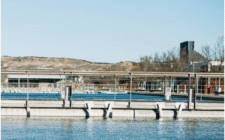A cable railing system is a great addition to any home. It adds aesthetics to stairways, decks, and protected areas like the swimming pool area. Cable railings are preferred by many people because they are sturdy and versatile. Installing cable railing systems is not easy as many people think. The installation process must adhere to cable railing systems building codes to ensure they are safe, strong, and durable.
After installation, you should take care of the cable rail system to ensure it serves you better for many years. To get it right from the start, you should hire professionals to install and advise you on maintaining the cable railing system. Additionally, you should research to learn installation and maintenance tips. Read on to learn cable railing installation and maintenance tips.
Tips for Installing a Cable Rail System
The following tips will ensure a sturdy and durable cable railing system;
Cable Railing Posts Sizes and Spacing
Cables railing posts come in different sizes depending on the application. If the system is for stairways in a residential area, the posts should be 36″ in height. This is the minimum height. However, one can go for taller posts reaching up to 42 inches. This height is measured from the floor level up to the top of the handrail or top rail.
Post spacing is another factor you need to look at. A maximum distance of 4 ft between the posts is recommended for 36 inches and 42 inches high posts. The spacing can vary, but one should ensure that the space apart is not that big to cause cable deflection. Additionally, the spacing between posts should be kept consistent along the cable railing system.
The Number of Cables and Spacing
Typically, the number of cables and spacing depends on the height of the cable railing posts. A cable railing system with 36-inch high posts should have 10 horizontal cable runs, while 42-inch high posts should use twelve horizontal cable runs. The spacing between the cables should not exceed 4 inches.
Choosing a Cable for Cable Railing
There are many factors you need to consider when selecting the best cable for cable railing systems. You need to look at the stretch properties of a cable, durability, strength, and pricing. You should choose a cable that can last long and fits your railing application.
On the market, you can find stainless steel wire, the main cable preferred by many people. The cable comes in different diameter sizes (thickness). If you anticipate that the cable railing systems will withstand a lot of push and pull, you should consider thicker stainless steel wire. If the cable railing is for aesthetics, you can go for thinner cables.
Installing the Top Rail
The top rail or handrail completes the cable railing system. You can consider different materials for the top rails, but you should choose something strong that is resistant to corrosion and moisture damage. You can choose a stainless steel top rail as it is strong and rust resistant.
If you want something unique and economical, you can go for wooden top rails. But to ensure the system is strong and durable, you should add a metal bar under the wooden rail for additional support.
How to Tension Cable Railing System
Each cable run is made from one terminal, one tensioner, and one stainless steel cable. One needs to use a tension meter tool to ensure the cables are not too loose or too tight. One should apply the tension meter on the cable, then twist the tensioner hardware until the desired reading is achieved on the tension measuring tool.
Additionally, people should start tensioning at the middle cables, then go to the upper runs and finish with the bottom ones. Also, they should ensure that the top rails are installed correctly before tensioning the cables. Most importantly, the installer should ensure that all posts are leveled from all angles before installing and tensioning the cables.
Cable Railing System Maintenance Tips
After installing the cable railing systems, you have another responsibility to take care of them. Proper care and maintenance ensure that the cable railings remain in top shape for the longest time. Here are some maintenance tips.
Regularly Clean the Cables
If you want the cable railing system to serve you for many years, you should clean it regularly. The cleaning starts with a routine rinse and wipe. This involves light wiping and freshwater rinse that removes dust and dirt on the cables. This should be done every week or once every two weeks.
If the cable railing system has persistent staining or signs of corrosion, you should do a full cleaning. This process involves using cleansing products that will get rid of stains and rust. You should use mild cleansing products that won’t corrode the wires. Avoid using abrasive soaps or products like acetones, mineral spirits, high concentrated acids, bleach products, toilet bowl cleaners, paint thinners, and more.
Regularly Inspect the Cables, Hardware, and Posts
Another excellent way to ensure that the cable railing lasts long is regularly inspecting it. Inspecting the cables, hardware, and posts ensures that you identify damages early and address them on time before they worsen. The inspection also helps identify hidden damages that are not easy to identify. Don’t forget to inspect the hardware holding the wires and check the tension. If the wires are too loose, find the cause, and tighten them.
The inspection helps you avoid costly repairs. It also ensures that the damages are repaired and the cable railing stays in the best shape possible. The inspection also helps you know when to replace the cables, damaged posts, or the entire system. But once a year, you should call a professional to inspect and maintain the system. And that can extend its lifespan.
Use Special Products to Prevent Corrosion
If the cable railing system is installed outdoors, it is exposed to high humidity and harsh environmental conditions. As a result, the cables, top rails, hardware, and posts risk rusting. But you can protect the system by applying special products that prevent corrosion. Ensures you pick the most effective rust-protective product. If rust forms, use the safest stainless steel cleaner to remove it.




